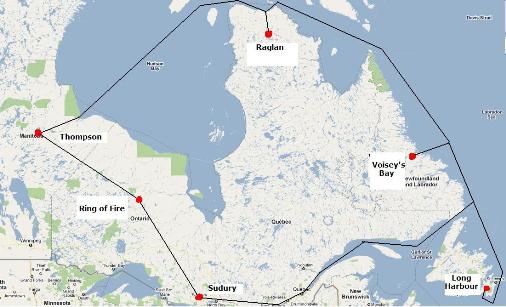Canadian Mining Review: Discussing ideas and issues related to mining in Canada
Our national mineral development strategy should include a requirement
to use mineral resources to our advantage by processing them prior to export.
(Patrick Whiteway)
The close proximity of Ontario’s Ring of Fire, Manitoba’s Thompson Nickel Belt and low carbon-emitting hydro power, give Canada an unparalleled opportunity to become a long-term, sustainable producer of stainless steel, the enviro-metal. If only the sustainability of the northern boreal forest could be assured as well.
Massive deposits of chromite and nickel have been discovered in the ‘Ring of Fire’ under the boreal forest of northwestern Ontario and plans by Cliffs Natural Resources and Noront Resources respectively to develop them are well underway. How this development is managed by the federal and provincial governments could be historically significant for resource development in Canada.
The scale of the undertaking is huge. It could, in the next 10 years, create Canada’s first chromite mine and with an appropriate level of visionary leadership, could also transform Canada into the lowest-carbon-emitting source of stainless steel on the planet.
























